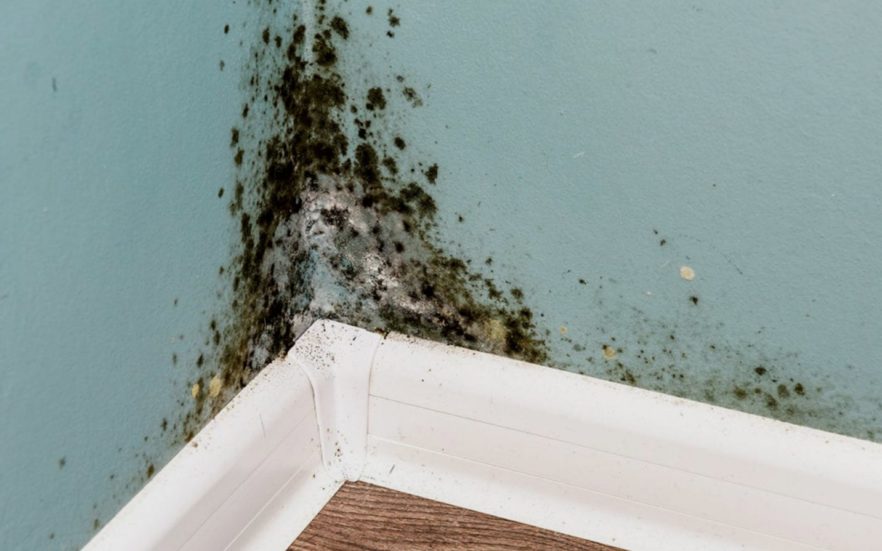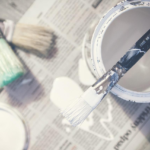Damp isn’t uncommon, especially if you are living in an environment that experiences a lot of wetness. Some household activities can also contribute to damp and, if left unresolved, can lead to serious damage. As a homeowner, it is very important that you know how to spot the early signs of damp and resolve them as quickly as possible. So if you’ve noticed damp in your home (floors and walls), the guide below can help you treat it before it has the opportunity to fester and create even bigger problems.
However, before finding a solution for damp, it is important to figure out what the underlying causes are in order to prevent it from occurring in the future.
Causes of damp
Rising damp – this common type of damp is usually caused by the capillary movement of groundwater up and through a building’s brickwork.
Condensation – the condensation of atmospheric moisture such as steam from cooking or drying wet clothing indoors can cause water to be deposited on the walls, floors, and ceilings.
Cracks – the presence of unsealed cracks on the surface of the walls, roofs, slabs, and terraces can allow moisture to enter a building, especially during the wet season
Poor drainage– moisture/water can accumulate on rooftops and subsequently enter into the walls when there is no proper drainage or slope.
Plumbing– when the plumbing system of a building has any form of leakage/damage, water can slowly seep in either through the walls or floorings.
Early signs of damp
- A musty smell that is very distinctive
- Peeling/lifting of paint and wallpaper from the walls
- Excess condensation on the windows even when it’s not winter
- Cold walls, floors, and ceilings
- Yellow/brown/dark patches (discolouration) on the walls
- Mould/mildew on the walls and floors
- Droplets of water on the walls
What to do when you have damp
Proper ventilation – this is especially important if you notice you have a condensation problem. Luckily, improving your home’s ventilation can serve as a quick and easy fix for condensation. Consider installing an extractor fan, especially in areas like your bathroom and kitchen. You can also take certain measures to improve ventilation, such as; wiping off condensation from your windows regularly to prevent mould from forming, opening your windows when cooking, washing or showering, drying clothes out in the sun instead of inside, building air bricks into exterior walls, sealing off chimneys for airflow and fitting ventilation tiles on your roof to allow free movement of air through the loft.
Invest in a Dehumidifier – dehumidifiers are a great investment especially since they can help draw moisture out of the air (especially in those cases where you have to dry clothes indoors). They can also come in handy for those indoor activities that add to the moisture in the air, such as; cooking and showering. This way, you can prevent condensation, water stains, and mould spores from forming.
Consider a Damp-proof paint– if the bricks used in the construction of your home are old and have become porous, you can try repainting your exterior walls with damp-proof paint, which is usually a silicone water-repellent fluid, or you can try a lime-wash. This process will seal your walls while still allowing them to breathe. Bear in mind that this may not work, and you may need to replace the bricks, so it is important that you get a professional to take a look at your walls first in order to determine what works best.
Install a Damp Proof Course (DPC) – this will require hiring a professional. Although most buildings will most likely have a DPC already installed, it won’t hurt to call a professional to confirm, and if your building doesn’t already have one, it is recommended that you have one installed. Reputable damp specialists London will be able to give you the best advice.
If the DPC in your building has degraded over time and is now vulnerable to rising damp, you can also consider a remedial damp proof course which is basically injecting a chemical material like silicone into it to provide a waterproof barrier and prevent moisture from seeping in.
Check your gutters– cracked or faulty guttering will most likely allow water to leak into your walls (penetrating damp). To prevent this from happening, always ensure that you fix any issues with your guttering immediately.
Conclusion:
Treating a damp problem immediately after you notice it is one of the best ways to rid yourself of it. However, an even better option would be to find the underlying cause of your damp problem and resolve it. For example, condensation issues can be easily solved with proper ventilation, and as for rising damp, installing a new DPC would do the trick.









